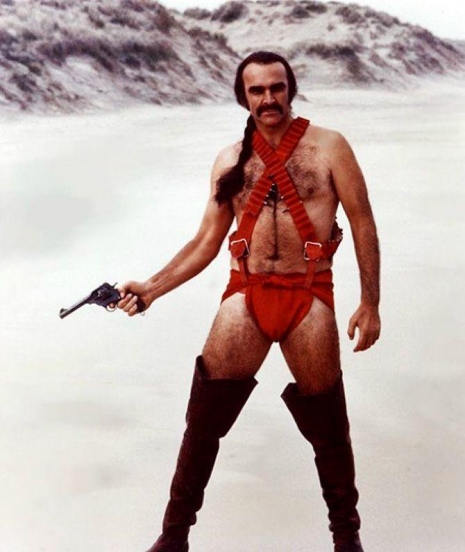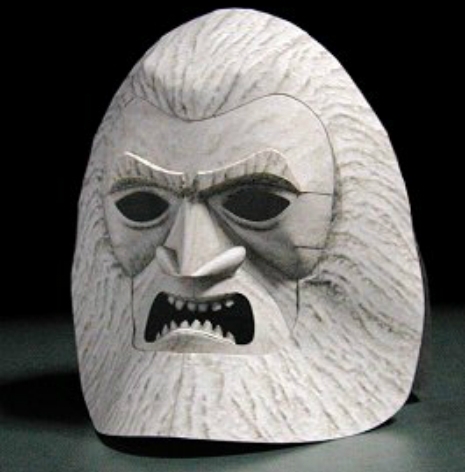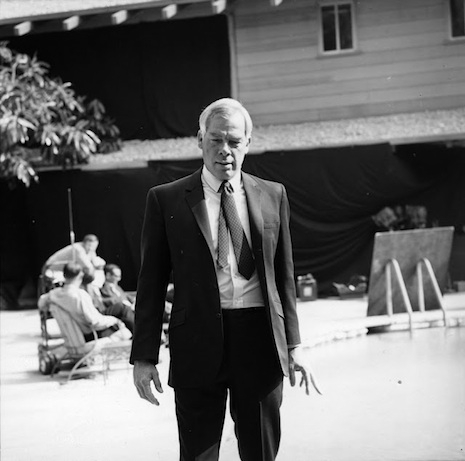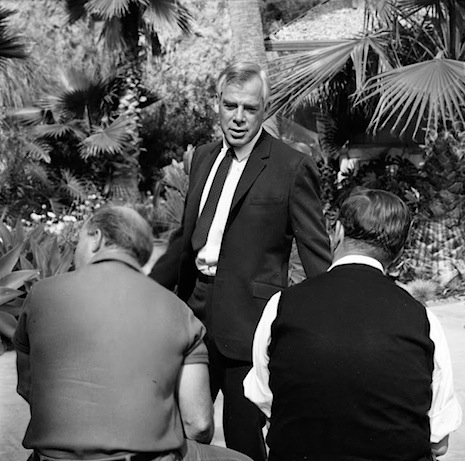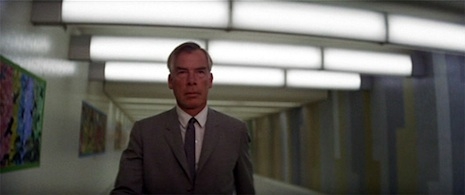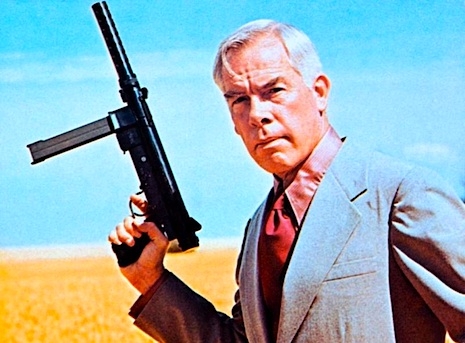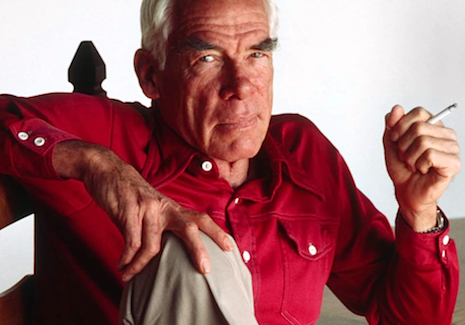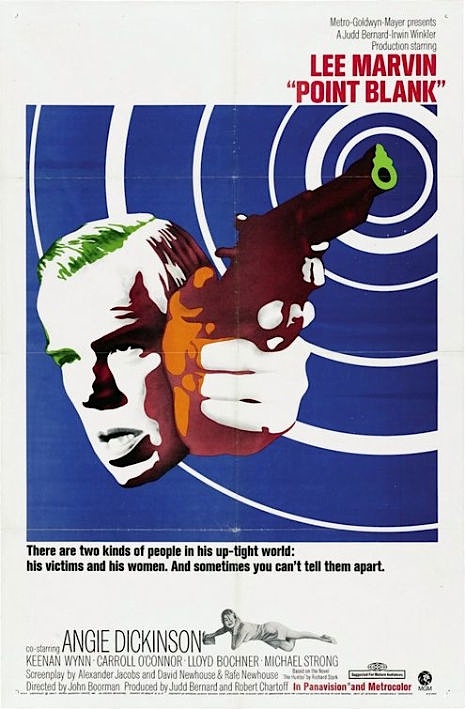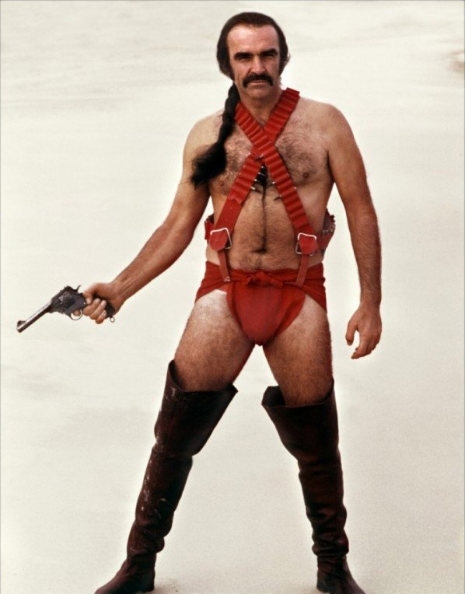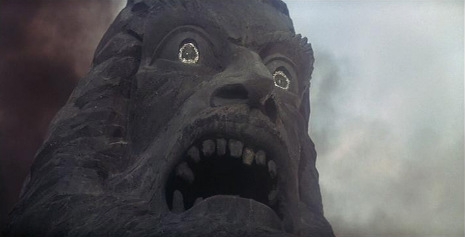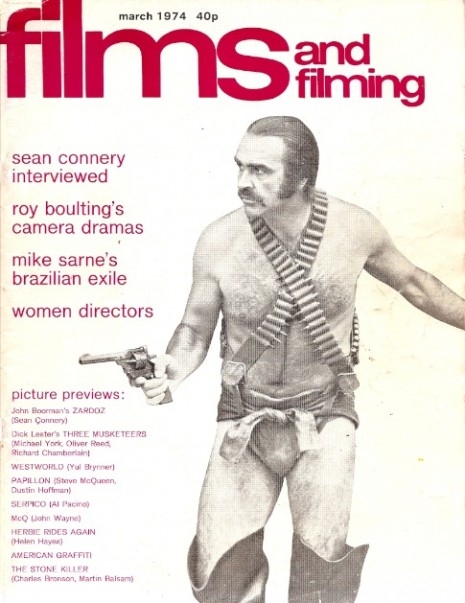
I read John Boorman and Bill Stair’s novelization of Zardoz when I was about 12. It was—to be frank—a defining moment in my childhood. The story chimed with many of my half-baked thoughts about those usual tropes—the control of religion, the division of class, society’s inequalities and its endemic violence. In a way you could say it was the start of my adult education. The book held extra significance as I had walked home from school for a week to save the money on bus fares to buy it. After reading it—nothing was ever the same. How could it be? When within its opening pages a flying godhead Zardoz has descended form the heavens and announced to its murderous followers:
“You have been raised up from Brutality, to kill the Brutals who multiply, and are legion. To this end, Zardoz your God gave you the gift of the Gun. The Gun is good!
“The Penis is evil! The Penis shoots Seeds, and makes new Life to poison the Earth with a plague of men, as once it was. But the Gun shoots Death and purifies the Earth of the filth of Brutals. Go forth, and kill! Zardoz has spoken.”
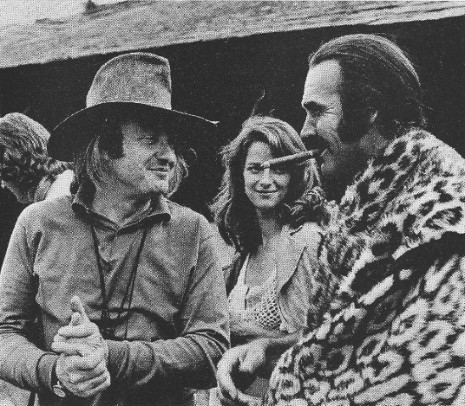
When Sean Connery was sent the script, he was “absolutely caught by its originality”, as he told Gordon Gow from Films and Filming in 1974:
“It was one of the best ideas I’d come across for ages…So by the following weekend I was over in Ireland to prepare for filming.
“What gripped me especially was the direction the people in [the script] were taking in the future existence, as opposed to space ships and rockets and all that…[..]...What does interest me is the possible development of society in centuries to come. The way different levels and types evolve in the script is intriguing and refreshing, and could well be true. The fact that people are not going to die, for example.
“Many things are changed by the knowledge you’re not going to die. There’s no need to procreate, therefore it takes away the sexual drives. Today we live in the age of analysis: we can give answers as to why people do things, whether it’s ambition or fighting for power or because they hated their father or their mother - their hangups become a kind of blueprint to their behavior. But if you take that away you get an entirely different concept of human beings.’
Connery hadn’t been Boorman’s first choice, that had been Burt Reynolds, with whom Boorman had scored the major hit Deliverance. Somehow I can’t imagine Reynolds carrying off the thigh high boots or red loin cloth, or exuding the necessary untrammeled masculinity. With the success of Deliverancve, Boorman was given a carte blanche to make what he wanted. He started working on a science fiction script, Zardoz, in 1972, and brought in Bill Stair to “...help rationalize the visions that threatened to engulf me.”
Zardoz is certainly rich with ideas, some better developed than others, but all have their own merits. That’s one thing about the best of seventies’ films, they had intelligence behind them, ideas at play, rather than today’s reliance on CGI and anodyne stories.
Set in the 23rd century, where Exterminators trade grain with their god - Zardoz - for guns to exploit and kill. Enter Zed (Connery) who questions why a god would require grain, and sneaks on board the flying godhead to uncover the secret of Zardoz and life beyond the Outlands in the Vortex.
The Outlands: once it was called the good Earth. Now it is the desolate, exhausted, polluted wasteland all the world has become, except for the lush Vortex.
The Eternals: members of the Vortex. Highly privileged scientists and intellectuals, eternally young, who have learned all the Secrets of Life - except one.
The Exterminators: a privileged and physically superior group permitted to breed under strict control to fight the Brutals and support the Vortex.
The Brutals: the last survivors of the dying world outside the Vortex, who live at subsistence level.
The Apathetics: victims of the pursuit of perfection, they are Eternals who have found the strain of immortality too great and live only for the one thing their society denies them.
The Renegades: malicious, embittered offenders in the Vortex who would defy and destroy the establishment - if they could only find it.
Connery explained the film to Gow:
“Then society, a sit always does, starts to fragment into different strata. There are the Apathetics and the Renegades. They are all Eternals, these people, who are going to live forever. The base of all the great learning that the world has accumulated by that stage becomes a Tabernacle, which gives people information as to how to act, like a major computer, a great feed-tank put together by the best minds of the world. But the human condition is such that it still retains anger and other emotions.
“There are areas like oases: each is known as a Vortex. They exist throughout the world on a system of highly democratic rule with guidelines supplied from the Tabernacle. But the Renegades abhor the system and fight it…[..]...On the other hand, the Apathetics are reluctant to do anything at all..the Renegades they’d really like to die, to get out.
“Beyond the Vortex areas, there are the Outlands: very barren. The inhabitants there are called the Brutals, they’re rather like our present society, not very civilized. The god Zardoz gives the Brutals something to worship, the gun. the penis is evil, the gun is good. The Brutals are necessary to each Vortex, because they’ve been taught to provide wheat and other food substances…[..]...This is where the character I play comes in. I hide in the head…[..]...and set about destroying the society.”
For your delectation, here is the original photo preview for Zardoz, which appeared in Films and Filming in March 1974.
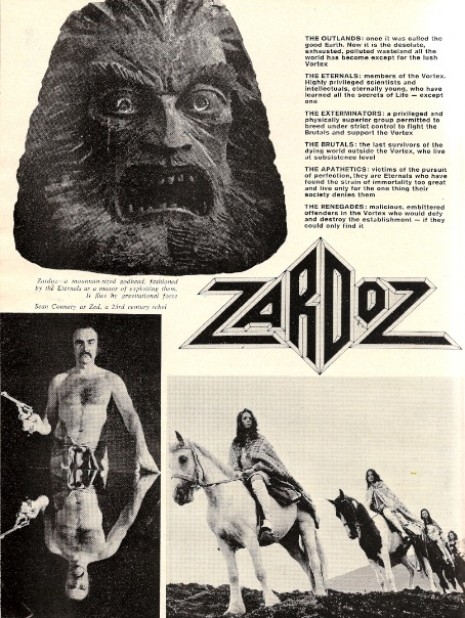
More pics from ‘zardoz’, after the jump…
